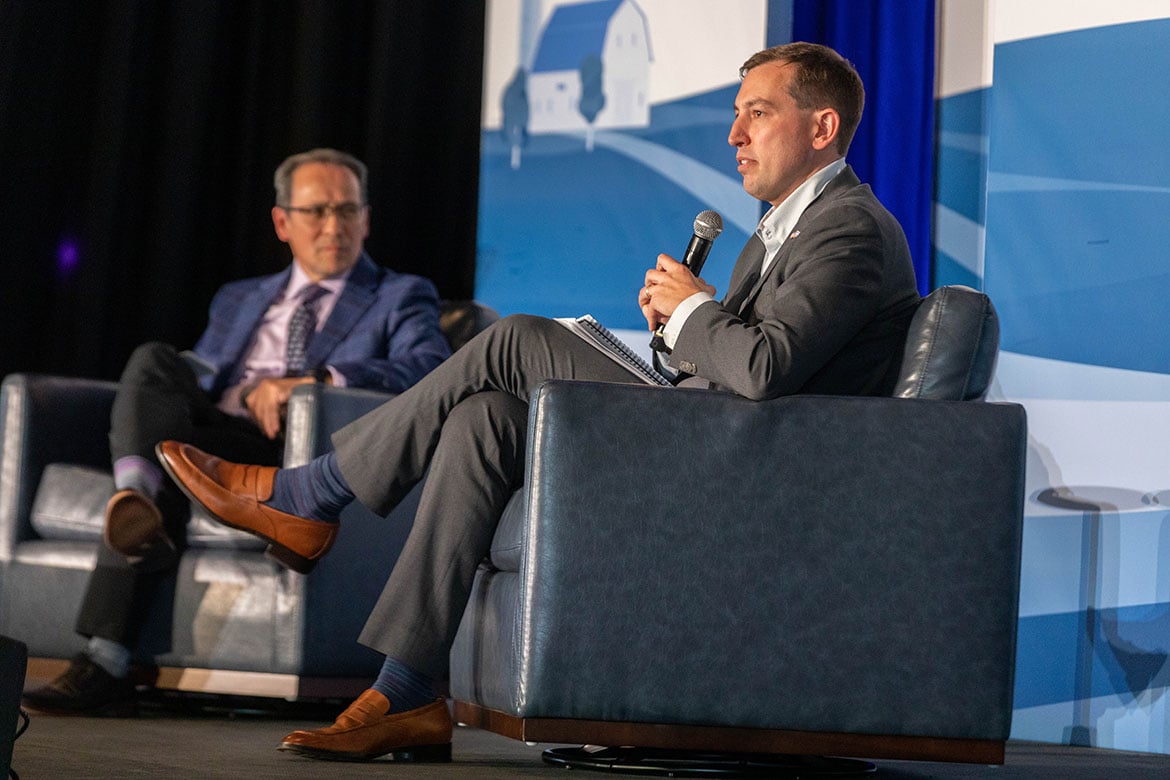AMA President Jesse Ehrenfeld, MD, MPH, has seen his share of casualties from physician burnout in the United States. A physician whom he recruited packed up her practice because she could no longer tolerate the policy environment and restrictions on care in her community.
During the pandemic, an emergency physician colleague of his committed suicide.
“He was a loving soul who didn't know how to ask for help. And unfortunately, the stigma around asking for help when you need it continues to this day,” said Dr. Ehrenfeld, an anesthesiologist.
Walking into the physician's lounge one day, he saw a surgical colleague break down in tears from exhaustion and frustration.
“We’ve got a workforce at risk. And there are tremendous pressures,” said Dr. Ehrenfeld, who spoke on physician burnout and other topics ranging from augmented intelligence (AI) to workforce shortages during Sanford Health’s second annual Summit on the Future of Rural Health Care.
An aging physician workforce is trying to take care of an aging population. Incidence of chronic conditions like obesity and hypertension is on the rise.
Reengineering care delivery is a vital solution, Dr. Ehrenfeld told Luis Garcia, MD, president of Sanford Clinic and Sanford World Clinic, and moderator of the session on burnout. Dr. Garcia also is a member of the AMA Integrated Physician Practice Section’s governing council.
Sioux Falls, South Dakota-based Sanford Health is part of the AMA Health System Program, which provides enterprise solutions to equip leadership, physicians and care teams with resources to help drive the future of medicine. The health system has proactively addressed burnout, focusing on three well-being priorities: engagement, resiliency and leadership.
The Sanford Health Summit on the Future of Rural Health Care brought together health system CEOs, industry experts, prominent tech leaders and front-line caregivers for candid, wide-ranging conversations about the future of rural health care.
“If we don't come at these things systematically, which is what the AMA Recovery Plan for America's Physicians is all about, we are going to be in a real, real pickle,” Dr. Ehrenfeld said. (Watch his conversation with Dr. Garcia, and check out this playlist of other sessions from the Sanford Summit on the Future of Rural Health Care.)
Far too many American physicians experience burnout. That's why the AMA develops resources that prioritize well-being and highlight workflow changes so physicians can focus on what matters—patient care.
Improve workflows, remove burdens
COVID-19 significantly affected physician well-being. Post-pandemic data show “unprecedented levels of burnout,” noted Dr. Garcia. Up to 60% of physicians suffer from burnout; 25% are depressed, and 9% have declared suicidal thoughts. Two in five physicians have considered leaving the medical field, he added.
“The problem's not with the physician—the problem is the systems that we work in,” Dr. Ehrenfeld noted. It’s about administrative waste and poor organization.
Scrapping our entire health system to remove the inefficiencies is too daunting, he continued. Instead, the profession needs to think about peeling away these infrastructure problems; reengineering workflow and leveraging technologies to make things easier, he urged.
This involves doing pre-visit work to make sure that medication reconciliation isn’t a burdensome afterthought, but something that works for the team and works for the patient.
“The AMA has been working to try to support systems and practices large and small in doing this,” said Dr. Ehrenfeld. AMA STEPS Forward® toolkits, for example, educate systems and practices on how to do things in a systematic way to optimize care.
Sanford Health earned gold level recognition in the AMA Joy in Medicine™ Health System Recognition Program this year. Learn how the health system keeps pressing on to prevent doctor burnout.
AI can boost workflow capacity
Technology is a key part of reimagining care. Health systems are making creative use of AI.
A small box the size of a speaker has made it easy to screen patients with diabetes for diabetic retinopathy, for example. A primary care office could use it.
“Suddenly, you can screen, endlessly, every diabetic patient in America for diabetic retinopathy. And then it means your ophthalmologists only need to see the patients with the disease. That's how you reimagine a workflow to scale capacity using the technologies,” said Dr. Ehrenfeld.
Unfortunately, too much IT is developed without physicians’ insight and involvement—with adverse consequences for doctors and for patient care.
“We need these things to work better for all of us. We need them to contribute to solving the problems, not making them worse. But that requires, obviously, our voice and clinical insights to be present throughout the technology design cycle,” he said, highlighting the AMA Physician Innovation Network and Health2047, the Silicon Valley-based subsidiary of the AMA created to overcome systemic dysfunction in the U.S. health care system.




